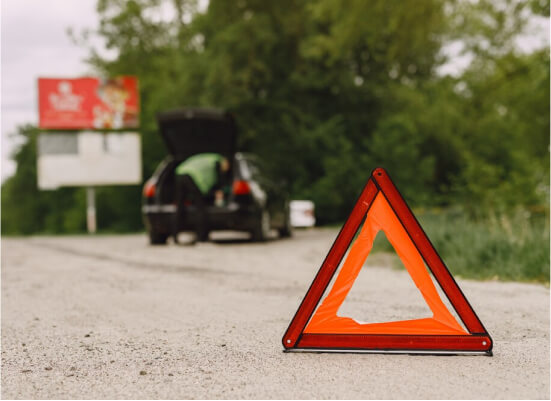The Dangers of Distracted Driving
While the advent of always-accessible technology has made our society safer in some ways, it’s also left us with constant temptations to drive distracted. The result is impossible to ignore: today, distracted driving causes roughly 25% of all motor vehicle accidents. Teenagers and other young drivers are at especially high risk.
For parents or guardians of young drivers, there are steps you can take to ensure your child is ready to get behind the wheel. Keep reading for tips on talking to your child about the dangers of distracted driving.
Start the Distracted Driving Conversation Early
Promoting safe driving habits starts early. From a young age, make it clear that driving can be extremely dangerous if drivers don’t take the right precautions. Having safe driving conversations early builds healthy expectations for new and young drivers when they’re finally able to drive on their own. When it comes time for them to get behind the wheel, they’ll be less tempted to text a friend or check their Twitter feed while on the road.
Be a Role Model for Safe Driving
The most effective way to encourage safe driving behavior is to model that behavior yourself. Avoid the old trap of saying, “do as I say, not as I do,” which rarely works. This kind of behavior from you teaches your children that there are always exceptions to the rules.
Instead, model the behavior you’d like your teen to adopt. Avoid talking on the phone or texting while driving. Don’t use apps while operating your car or truck, and if you need to navigate, keep your cell phone in a phone holder with the volume up so you can listen to the verbal directions with two hands on the wheel. In general, if you don’t want your child to do it behind the wheel, you shouldn’t either.
Keep the Conversation Free From Distractions
One reason it’s hard to have a real conversation about distracted driving is that the distractions follow us out of our cars and into our homes. When it comes time to talk about safe driving habits, make sure to carve out a focused period that’s free from distractions. Turn off the television and wait until dinner is over to bring up this serious subject. Having a focused conversation away from the distractions of TV, tablets, smartphones, and even food and drink communicates the gravity of the subject and allows you to connect with your child.
Speak Plainly About the Risks of Driving Distracted
Part of being responsible and mature enough to drive involves understanding the risks associated with driving, and it’s your job to help. Share statistics with your children, have them view crash simulations, and forward articles about crashes involving teen drivers. It’s hard for young people to take the risks of distraction seriously if they don’t fully understand them.
Establish Boundaries, Rules, and Consequences for Driving
While driving is an essential part of many new drivers’ lives, it’s also a privilege. Establishing boundaries, rules, and consequences helps young people establish safe driving practices from the start. As parents, don’t be afraid to set rules and define consequences.
Some ground rules to consider:
- No cell phone use while driving (even hands-free devices create an increased risk for a crash)
- No more than two passengers at a time
- All passengers must wear a seatbelt, no matter how short the trip
- Music must be kept below a certain volume
- No driving past a certain hour of the night (g., 11 p.m.)
Texting and Driving Is Illegal in Oklahoma
Remind your child that not only is texting and driving dangerous, it’s also illegal in Oklahoma. Drivers pulled over for texting and driving can face expensive fines and even lose their license after repeat offenses.
Use Technology to Promote Safe Driving
When it comes to distracted driving, technology creates many problems, but it also provides solutions. Using functions like a smartphone’s airplane mode or silent mode can help reduce distractions with minimal hassle. And if you’re interested in solutions that provide more substantial safeguards, companies have developed several apps, including:
- TrueMotion Family: TrueMotion Family doesn’t block apps while driving, but it does share location data so parents know where their children are driving. The app also provides custom reporting that shows how many times a child looked at their phone while behind the wheel.
- LifeSaver: One of the most highly rated safe-driving apps, LifeSaver blocks app usage by drivers when the vehicle is traveling at speed. LifeSaver has a full roster of features, including passenger access, navigation, and arrival notifications. This app is ideal if you like accountability and access, as parents and guardians can use it to track many details of vehicle usage and driving habits.
Injured by a Distracted Driver in Oklahoma? Contact AMA Law to Get Help
Even the safest drivers can get injured when other people engage in negligent behaviors like distracted driving. If you or someone you love has been injured by a distracted driver, you may be able to recover financial compensation for your injuries and suffering.
To schedule your free case evaluation with an experienced attorney from the AMA Law team, call us at (405) 607-8757 or complete our quick and easy online contact form. We handle all injury cases on a contingent fee basis, so you’ll never pay attorney’s fees unless we help you recover financial compensation for your injuries.
The content provided here is for informational purposes only and should not be construed as legal advice on any subject.
